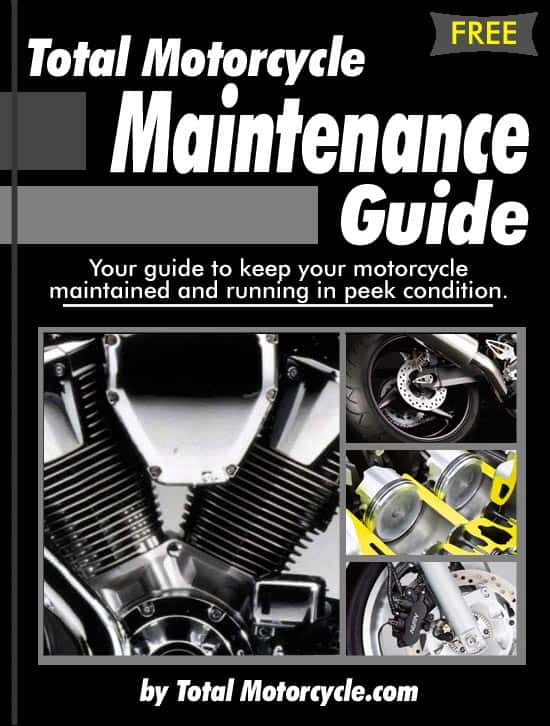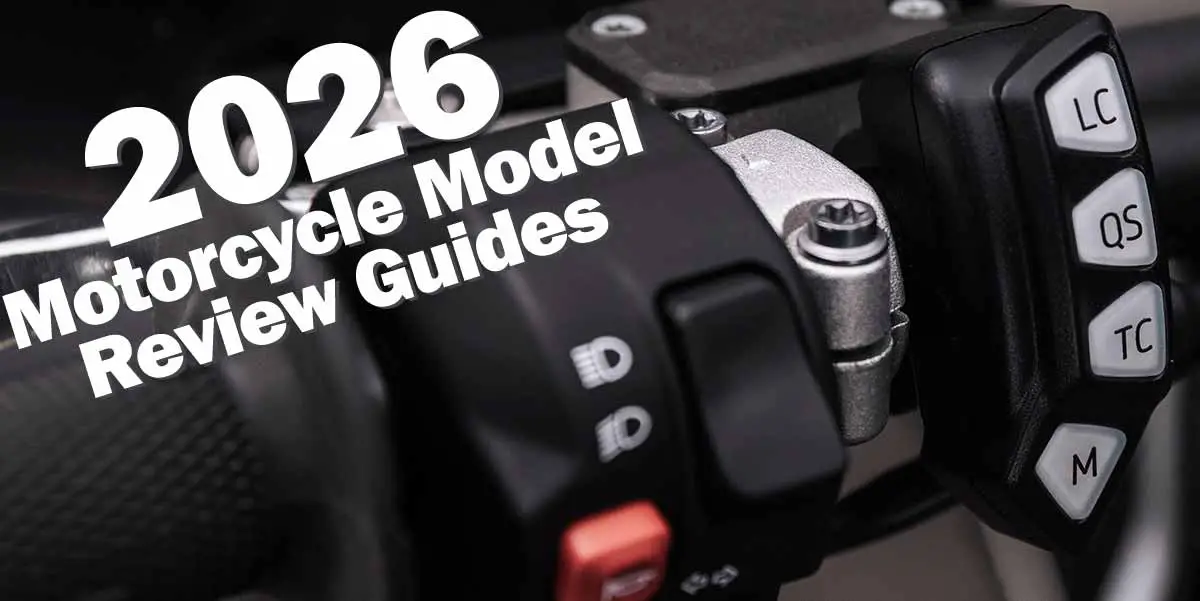TMW’s Motorcycle Maintenance Guide
Your guide to keep your motorcycle maintained and running in peak condition.
|
Motorcycle Maintenance Guide
|
|||

General Motorcycle Maintenance
Modern bikes require less maintenance than they did in the 60’s and 70’s but they still need a lot more maintence than a car. This higher reliability also means that there are a whole bunch of motorcyclists out there who haven’t a clue how to work on their bikes or what really needs to be done to ensure reliability.
Motorcyclists should be able to do at least baisic maintenance on their bikes.
The more care and maintenance you give a bike the longer it will last. Preforming general maintenance on your motorcycle will also help you spot problems before they happen.
Things to Check Regularly
Tip: There are dozens of parts on a motorcycle that could be checked on a regular basis and there is nothing wrong with check all those parts. But try to slim the list down to the most important items so you still have time to ride.
Here is a basic list of some of the most important things to check on a motorcycle. Even doing a little can make a big difference. Battery, Oil, Tires (tyres), Brakes, Chain and sprocket (Shaft Drive, Belt Drive) and Fuel (Gas, Petrol).
Storing your bike for winter
Well, it’s that time of year again! Soon the snow will be falling and the motorcycles will be tucked away for the winter
And each spring your dealer’s phone will ring off the wall with customers who did not store the ol’ bike properly and now wonder why it won’t run.
Some preparation now will ensure that you are out riding in the spring instead of waiting in the dealer’s lineup.
Motorcycle Battery Maintenance
Tip: There are dozens of parts on a motorcycle that could be checked on a regular basis and there is nothing wrong with check all those parts. But try to slim the list down to the most important items so you still have time to ride.
The Battery
THE BASICS
First things first. A 12-volt battery is not a 12-volt battery. Twelve volts is just a nominal, convenient term used to distinguish one battery from another. A fully-charged 12-volt battery, allowed to “rest” for a few hours (or days) with no load being drawn from it (or charge going to it), will balance out its charge and measure about 12.6 volts between terminals.
When a battery reads only 12 volts under the above conditions, it’s almost fully depleted. Actually, if a battery’s resting voltage is only 12.0 to 12.1 it means only 20 to 25% of its useful energy remains. It’s either a goner or it has been deep cycled, and a battery can only be deep-cycled a limited number of times before it is indeed dead.
12-volt batteries supply useful energy only through a limited range — from over 14 volts (when fully charged and unrested) down to 10.5 volts in use/under load (when lights dim, your motorcycle is hard to start). No 12-volt battery will remain at over 14 volts for more than seconds unless it’s being charged. The lowest limit is 10.5 volts (used in testing) and obviously unsatisfactory in practical use.
Sparkplugs:
Types
You may of noticed that there are hundreds of types, sizes and brands of spark plugs on the market. But out of that huge selection, only a handful will work with the motorcycle engine you own. Also different brands (NGK, Bosch, DENSO, Champion, Esc) will work better on different types of engines.
As a general rule of thumb, use the sparkplug your manufacturer recommends for your motorcycle (same brand and part number). Unfortunately some spark plugs are very specific to a type of engine and make only for that engine such as the NGK ME8 for $34.23 per sparkplug, compared to the “normal” price of $2-4 per sparkplug.
Motorcycle Tire, Tyre Maintenance
Tip: Keep a low pressure tire gauge (0psi – 80psi) in your bike tool bag at all times. Try to remember to check your tire pressure everytime you fill up for gas.
Keep your tires correctly inflated. A tire that is very under-inflated generates a lot of heat which can lead to a blow out. Tires that run too hot also wear out more quickly. The most common motorcycle breakdown is for tire damage.
Purchase a pencil-type tyre gauge and use it regularly until you instinctively ‘know’ what your tyres feel like correctly inflated. Use of the gauge and visual inspections must become second nature.
Replace your tires sooner rather than later. If tread depth is 1-2mm it is time to replace your tires. Take a tip from the mad sportbikers and the canyon racers – they never skimp on their tyres as they are often all that stands between them and the pearly gates.
Dry Rotting- or “cracking.” Usually means that the tires are old and/or the bike has not been in covered storage. Real “light” cracking may be ok, but basically if there is excessive dry rotting, you should get new tires.
Motorcycle Brake Maintenance
Brakes
Tip: Brake fluid absorbs moisture over time and becomes less effective. Replace brake fluid every one to two years and your brakes will preform the best they can.
Motorcycle brakes are an art by themselves! Modern bike brakes have just an amazing stopping power, well beyond that of what the regular rider will encounter while riding.
Motorcycles have up to two brake fluid reservoirs, one for the front, usually found on the handlebars and one for the back. Both should be checked regularly. Topping up should only be done from a new, sealed bottle as brake fluid tends to absorb moisture over time. If your brake pads are thin and due for replacement. Beware – brake fluid, if spilt on paintwork eats right through to the bare metal.
Also check the thickness of the brake pads. If you allow them to go right down to the metal your brake disc will be damaged resulting in an unnecessary and expensive replacement. Fitting braided steel brake lines will increase the performance of your brakes by roughly 50%

Michael Le Pard (“Mr. Totalmotorcycle”) is the Founder of Total Motorcycle, the world’s largest motorcycle information site, trusted by over 430 million riders since 1999. With over 34 years of experience in motorcycles, gear and rider culture, he has built a global community dedicated to empowering and inspiring motorcyclists.
Total Motorcycle remains his passion project. Combining expert research, hands‑on knowledge and a commitment to helping riders make informed decisions about bikes, gear and safety worldwide.


